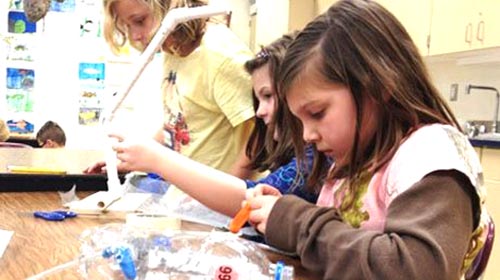
From K-12 Dive
By Lauren Barack
Nov. 24, 2021
Dive Brief:
By focusing on “specific big-picture learning targets,” educators can help students gain more understanding of the material and instill the tools that allow them to bring those concepts to other subjects, a cornerstone of deep learning, according to an article from ASCD.
A passion for learning helps in this quest, and to spark excitement in a subject, educators can ask students questions with more open-ended options. This can increase interest around a topic or project, which in turn drives deeper learning, as well.
Educators should focus on ensuring students have time to work on their own so they have room to develop ideas, investigate and explore possibilities by themselves before a teacher comes back into the learning process.
Dive Insight:
Deep learning marries curiosity, exploration and critical thinking into education, often through cross-curricular material, and is considered crucial to preparing students for handling and connecting complex problems and ideas.
This approach helps students strengthen the ability to take skills and learning they’ve developed in one area and actively apply that to another, driving their own learning. In this way deep learning is the opposite of rote learning, where details are learned in isolation, memorized and expressed.
Deeper learning can work across any curricula and often gives students the reins to dive into areas that interest them. Educators can approach this way of teaching by designing modules based on themes, which can link multiple subjects, from chemistry to humanities, and give students enough time to explore how these areas are inter-connected.
Deep learning can often be driven by choice — as students optimally want to learn more by discovering a purpose to what they’re exploring. Peer-involved learning, with students driving the discovery, can also help spark classes to master a project or subject, or encourage them to research even further.
Educators can bring this approach to other areas, including helping pupils prepare for assessments. In this way, students can be encouraged to rethink study guides and flashcards — which draw on short-term memory — and try writing out their own study guides or even potential test questions.
Students can then challenge themselves to explain an answer rather than recall a fact for a multiple-choice response — a skill they can bring not only to their education, but to later career demands.
Photo: Edutopia
Read this and other stories at K-12 Dive

